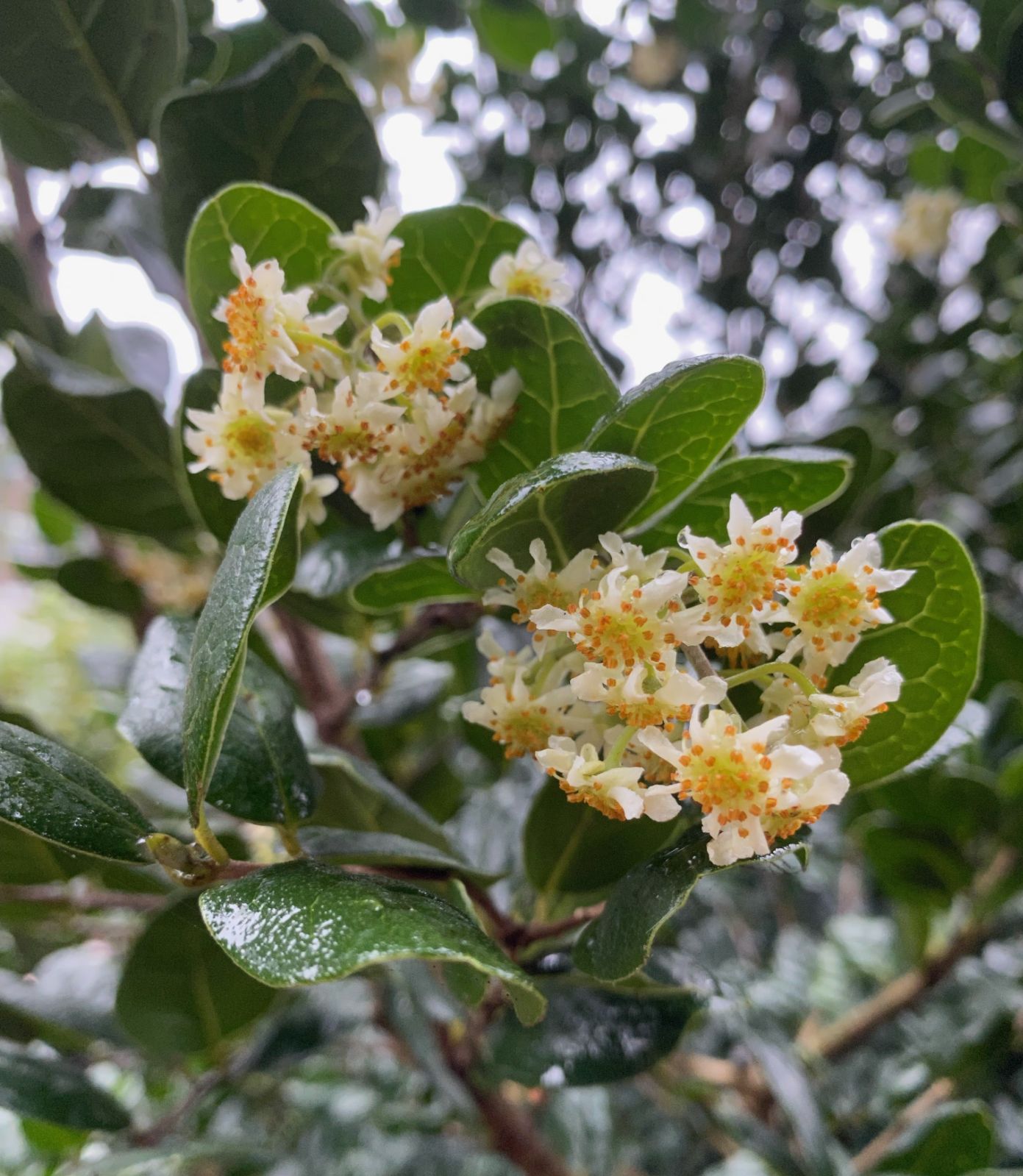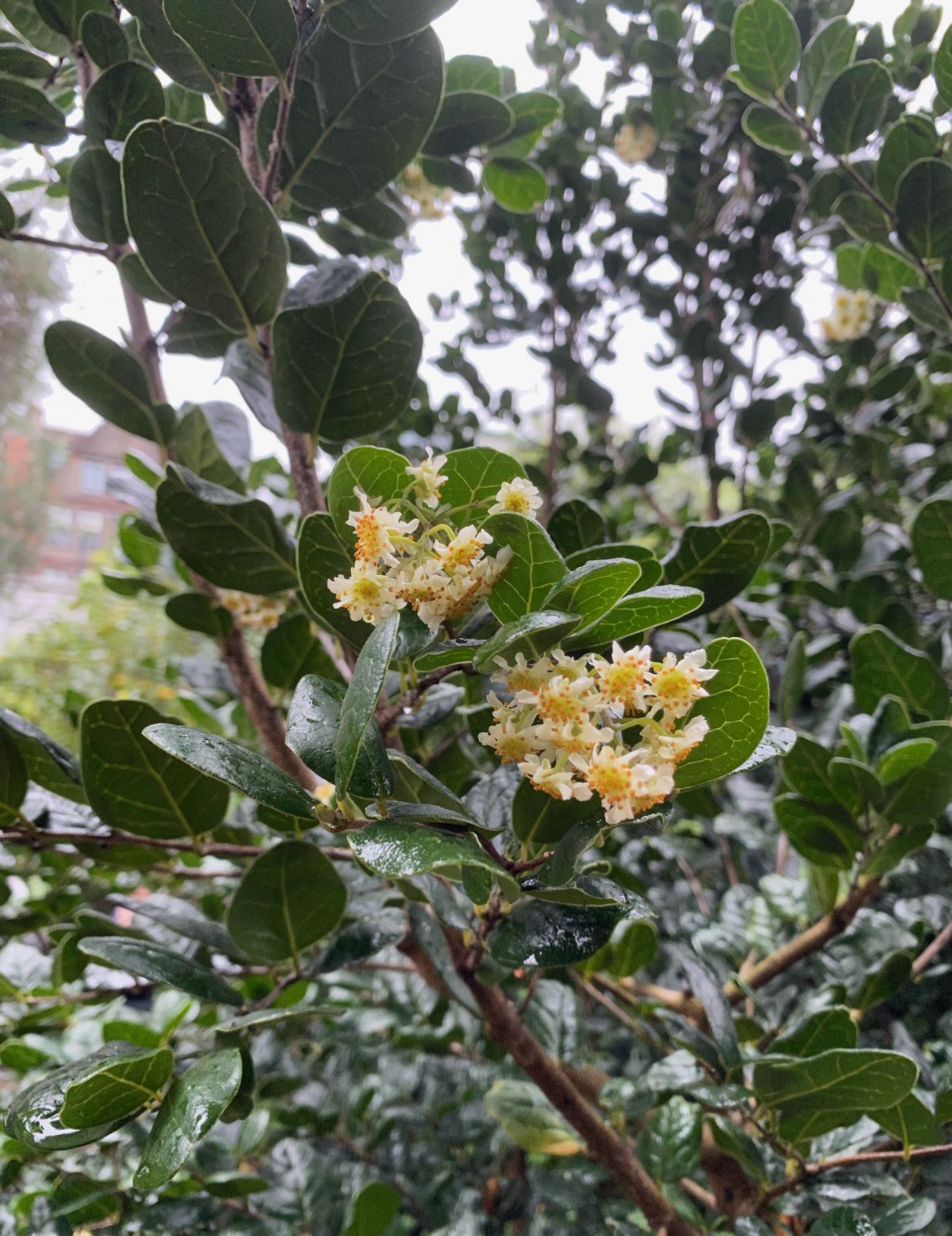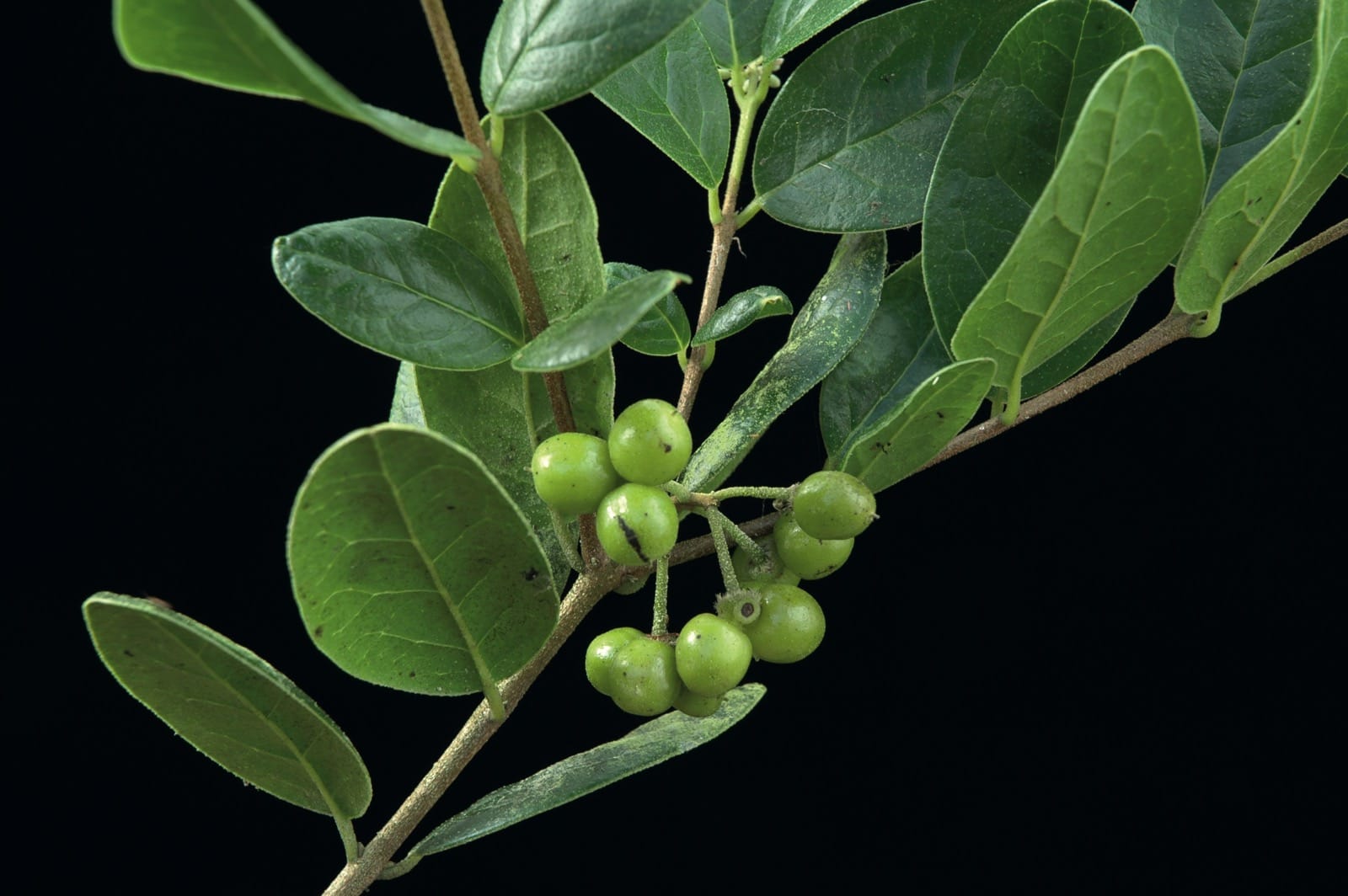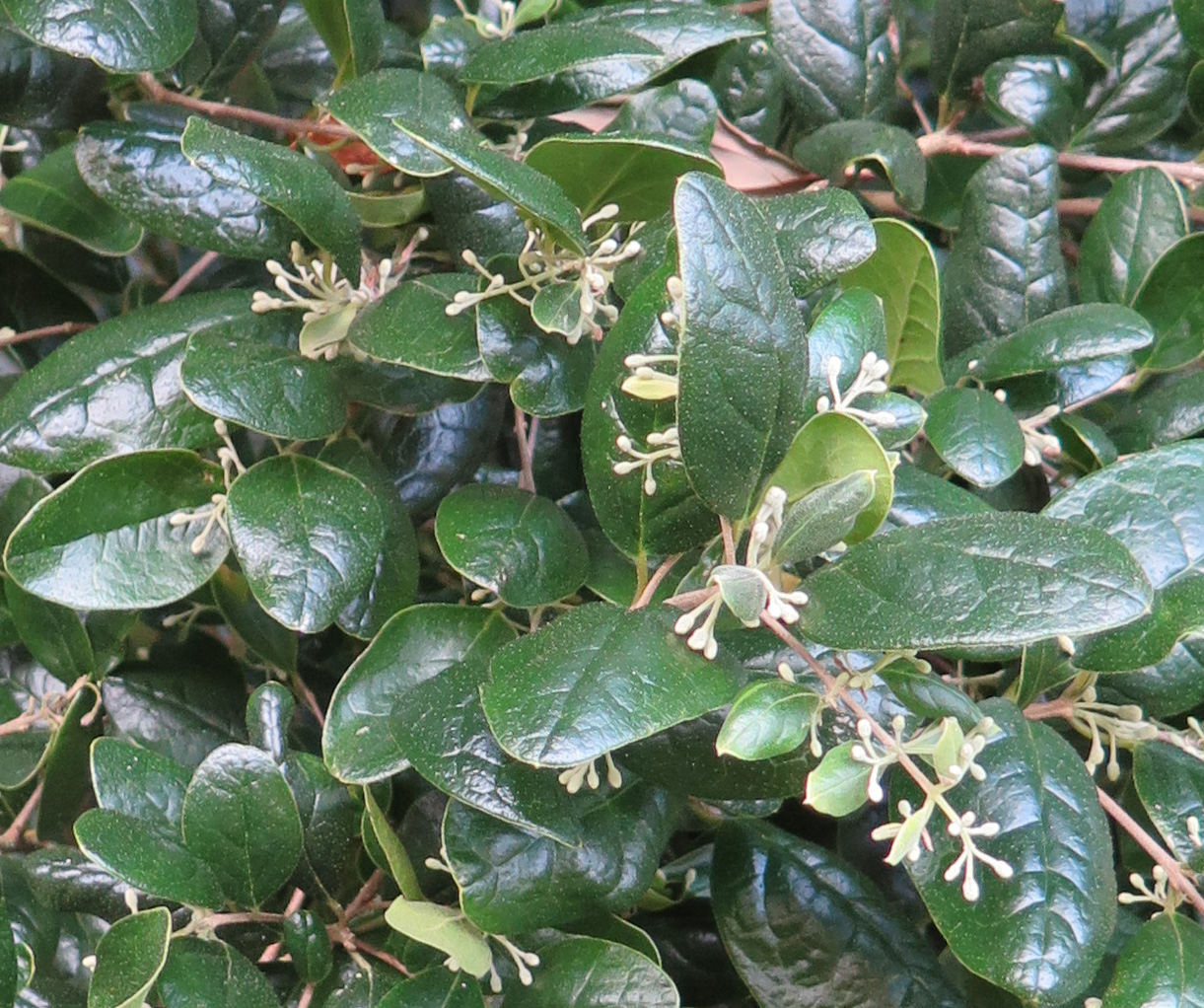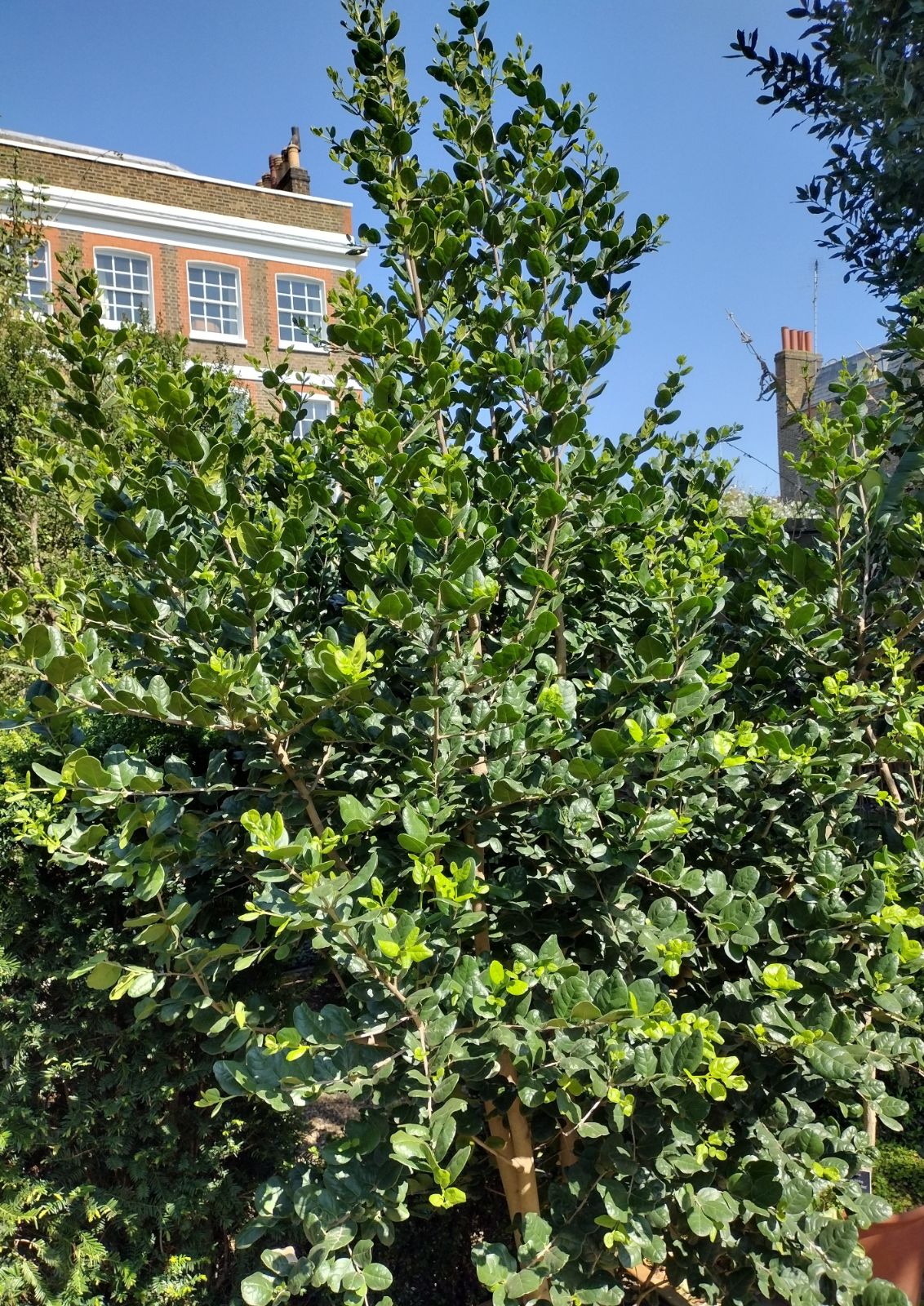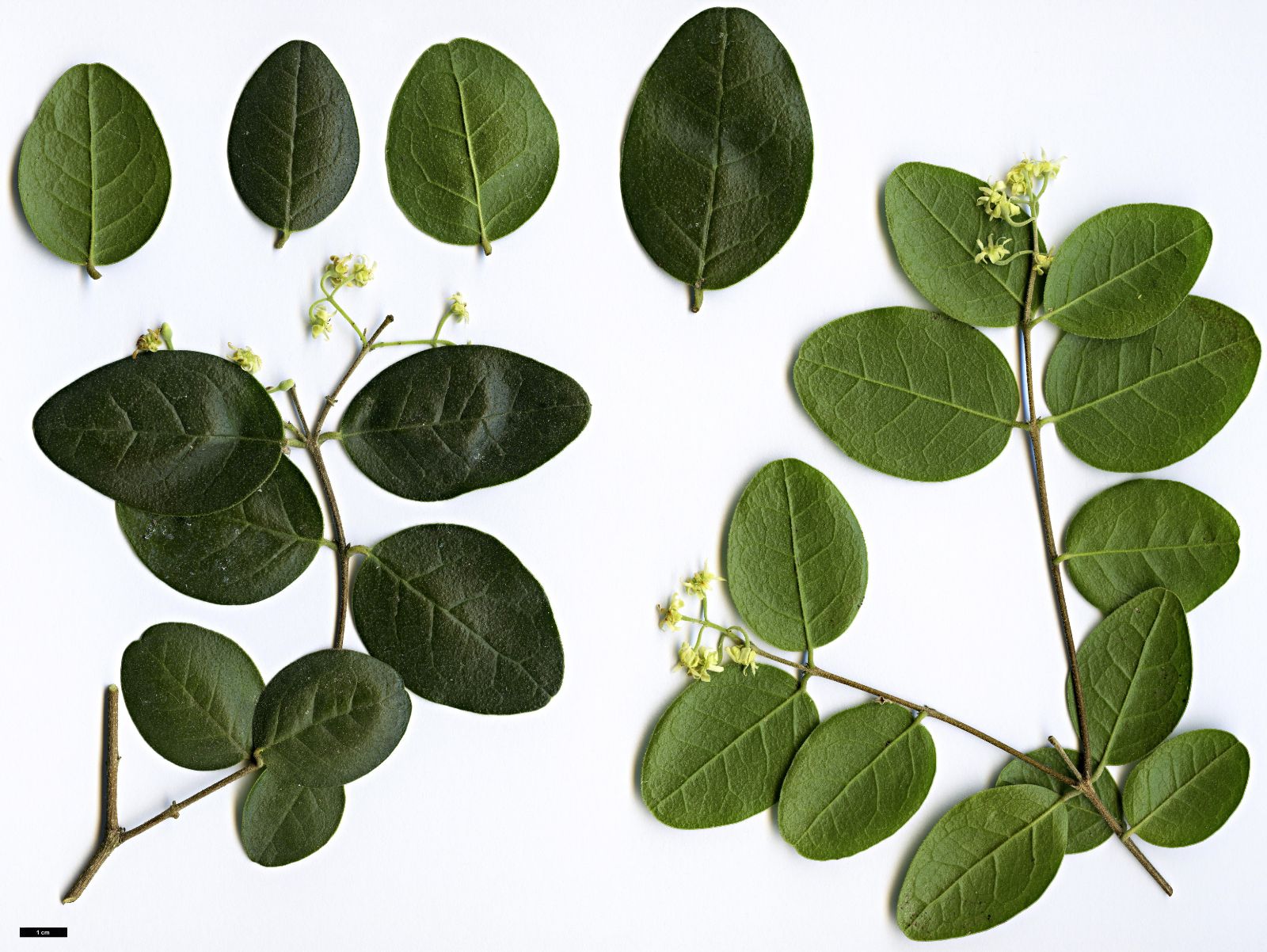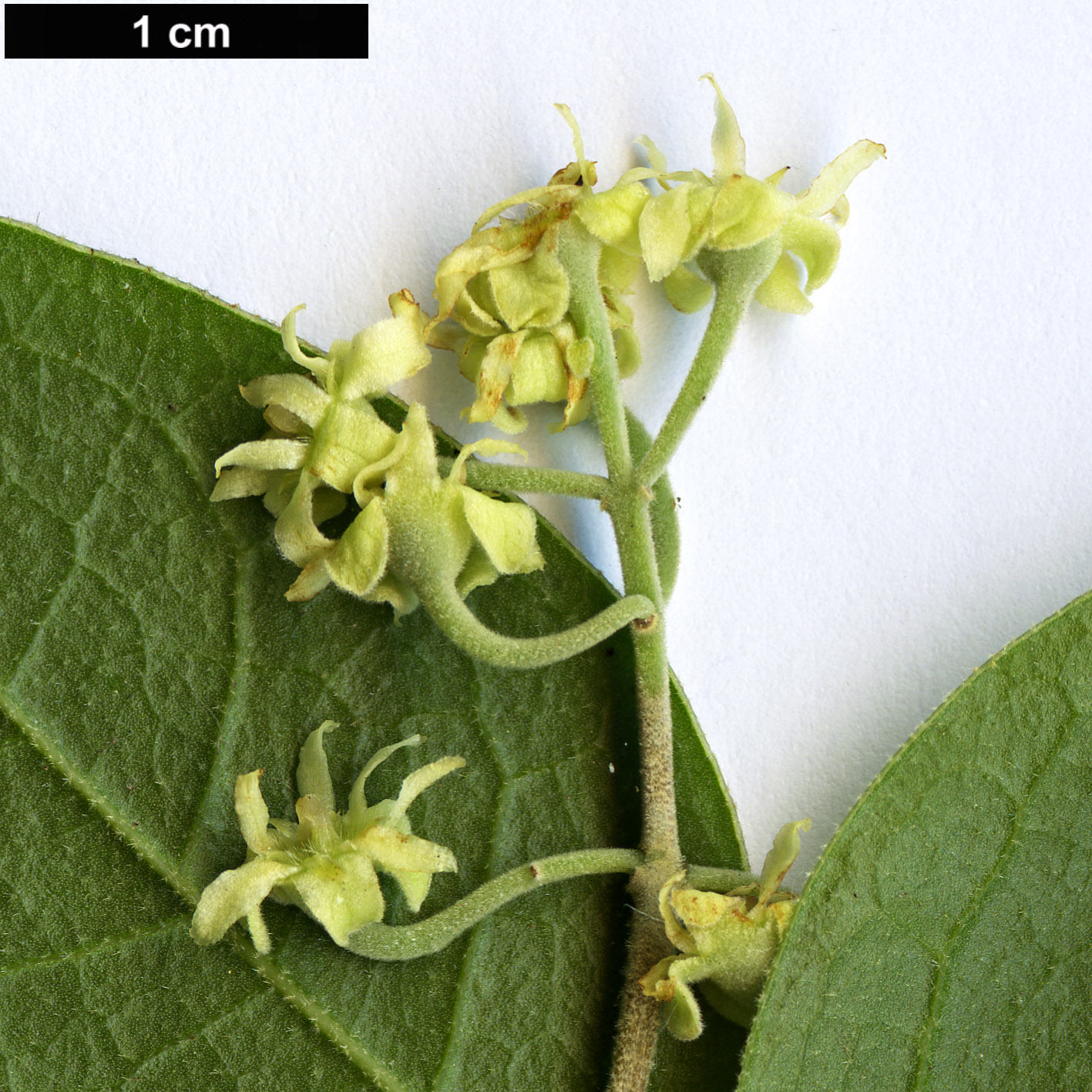Peumus boldus
Credits
Article from New Trees by John Grimshaw & Ross Bayton
Recommended citation
'Peumus boldus' from the website Trees and Shrubs Online (treesandshrubsonline.
Genus
Common Names
- Boldo
Other taxa in genus
Large shrub or tree to 20 m, 1 m dbh. Bark pale grey, rough and flaky when mature. Branchlets tomentose when young. Leaves evergreen, opposite, leathery, 2.5–5 × 2–2.5 cm, ovate to elliptic, upper surface dull green with a prominent midrib and a dense covering of glands, lower surface pale green with dense, stiff fascicled hairs, 6–10 secondary veins on each side of the midrib, margins entire and revolute, apex obtuse; petiole 0.3–0.5 cm long, tomentose. Inflorescences axillary or terminal, composed of 5–12 flowers in a lax raceme. Dioecious. Flowers yellowish white and rather small; staminate flowers with 10–12 tepals in two to three whorls, the outer tepals densely pubescent, the interior tepals petaloid, stamens numerous; pistillate flowers similar to the staminate flowers or slightly smaller, carpels two to seven, pubescent. Fruit a drupe 0.6–0.8 cm long; usually two to five carpels ripen within each flower, though rarely solitary fruits are produced. Flowering June to August, fruiting December to January (Chile). Rodríguez R. et al. 1983. Distribution CHILE: Limarí Province to Osorno Province. Habitat Humid forest, but also adapted to rather dry conditions, between 5 and 1000 m asl. USDA Hardiness Zone 8. Conservation status Not evaluated. Illustration Rodríguez R. et al. 1983; NT558. Cross-reference K371.
Peumus boldus is highly regarded as a medicinal plant, both in Chile and throughout the world. The tree is the source of numerous alkaloids claimed to have beneficial properties for liver, gastric and cardiovascular function, and an infusion of its leaves is sometimes drunk as a digestive tea (Taylor 2005). To harvest leaves for extraction of medicinal products it is apparently grown in plantations in Italy, North Africa and Brazil (Taylor 2005), but it is not well known as a horticultural subject further north. Its medicinal properties are perhaps its chief recommendation as the plant is not particularly attractive in itself, forming a dense and rather dark mass of foliage, although the leaves flush a paler green. When crushed they are very strongly scented, with something like the familiar kick-in-the-nostrils effect from Umbellularia californica (Hook. & Arn.) Nutt.
In northern Europe the most notable site for this species may be Logan Botanic Garden, where it is grown from several collections, the trees showing slight variation in leaf width. The largest has reached c.5 m tall, from a collection made by D. Contreras in 1987. It is also grown in Cornwall, where there is a tree at Tregrehan, and in the western United States.

